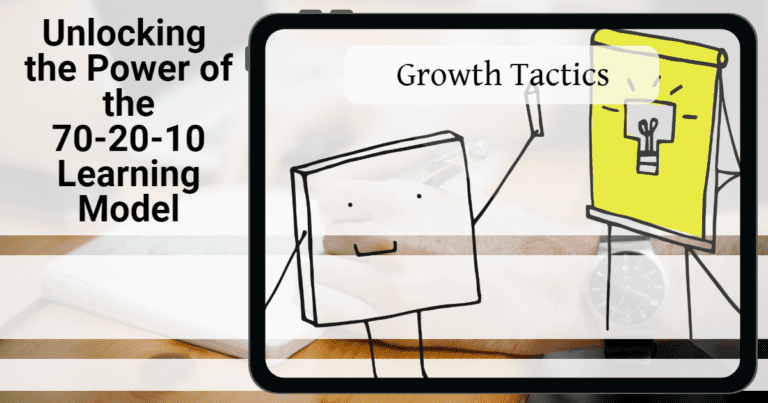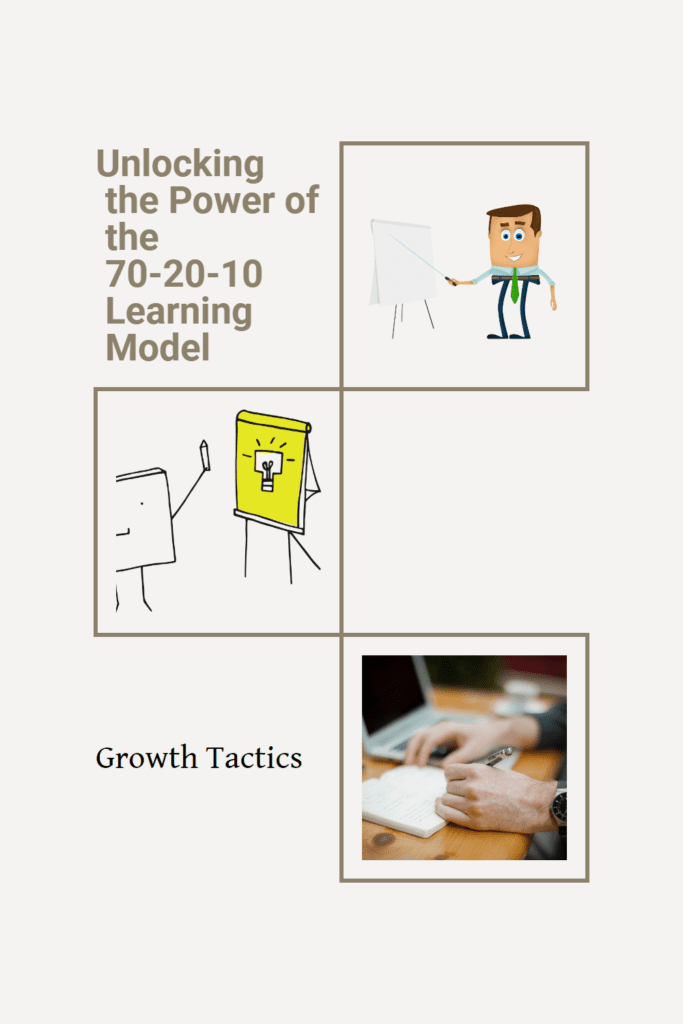Are you tired of traditional learning methods that do not show results? Do you wish there was a better way to train your workforce and see long-lasting development? Look no further than the 70-20-10 learning model, a revolutionary approach to learning that prioritizes experience-based learning over formal training.
The 70-20-10 learning model is not just a buzzword, but a proven way to increase productivity, engagement, and job satisfaction in the workplace. In this article, we will take a deep dive into the 70-20-10 model and discuss how it can benefit both employees and employers.
So, why is this article worth reading? Whether you are an HR manager or an employee looking to maximize your learning potential, understanding the 70-20-10 model can benefit you in countless ways. By incorporating this model into your workplace, you can create a learning culture that prioritizes growth and development, leading to more impactful training programs and a more engaged workforce.
Jump To Section
1. What is the 70-20-10 learning model?
The 70-20-10 model is a learning approach that prioritizes experience, a hands-on approach to learning, over more formalized training. The numbers represent the following:
-
70% of learning comes from on-the-job experiences
-
20% of learning comes from informal learning, such as interactions with colleagues or mentors
-
10% of learning comes from formal training, such as workshops or courses
This model has become popular in recent years as more organizations have realized that traditional learning methods, such as formal training programs, can only take employees so far. By prioritizing practical experience, employees can develop the skills and knowledge they need to excel in their roles and therefore grow within the organization.
2. The three types of learning: Formal, Informal, and On-the-job Learning
When it comes to learning, there’s more to it than just attending training sessions or completing courses. Learning can happen in various ways, and understanding the three types of learning is essential to unlocking your full potential. So, let’s dive deeper into each type and explore how they contribute to your growth and development.
Formal learning: The foundation of knowledge
Formal learning is what most people think of when they hear the word “learning.” It encompasses structured and planned activities with specific outcomes. This can include attending workshops, courses, or participating in online training programs. Formal learning provides a solid foundation of knowledge and skills necessary for performing your job effectively.
Think back to the last time you attended a workshop or completed an online course. You likely gained valuable insights, acquired new knowledge, and developed essential skills that you can apply in your work. Formal learning sets a strong baseline for building competence in your role.
Informal learning: The power of everyday interactions
While formal learning plays a crucial role, it’s not the only path to growth. Informal learning, that occurs naturally through our daily interactions, holds enormous power. Informal learning can be as simple as chatting with colleagues, seeking advice from mentors, or attending conferences. It’s the learning that happens outside of structured training programs.
Consider the regular interactions you have with your colleagues. These conversations often provide valuable insights and alternative perspectives that can expand your understanding of a subject or help you uncover new approaches to problem-solving. Informal learning is like a secret sauce that enhances your overall learning experience.
On-the-job experiences: Learning by doing
Now, let’s talk about the most impactful type of learning: on-the-job experiences. This is where the magic truly happens. On-the-job experiences involve hands-on learning through new tasks, shadowing others, or working on challenging projects. It’s where theory meets practice and knowledge transforms into skills.
Think about a time when you were given a new project or task that stretched your abilities. As you faced challenges, solved problems, and acquired new skills, your confidence and competence grew significantly. On-the-job experiences provide priceless learning opportunities and boost your ability to handle real-world situations with ease.
When you combine these three types of learning—formal learning, informal learning, and on-the-job experiences—you create a robust learning ecosystem that accelerates your personal and professional growth.
Remember, formal learning sets the foundation of knowledge; informal learning sparks innovation through interactions, and on-the-job experiences transform knowledge into practical skills. By embracing all three types of learning, you can cultivate a continuous learning mindset and unlock your full potential.
Now that we have explored the three types of learning, let’s move on to understanding the remarkable benefits of informal learning in the next section.
3. The benefits of informal learning
While formal learning still has its place, informal learning is proving to be just as important in the workplace. Here are some of the benefits of informal learning within the 70-20-10 model:
The role of social learning
Social learning is a key aspect of the 70-20-10 model. Employees learn significantly from interactions with their colleagues, mentors, or through coaching. This type of learning can lead to better communication skills, teamwork, and problem-solving abilities.
Learning from experiences
One of the most significant benefits of the 70-20-10 model is the ability to learn from experiences. By prioritizing on-the-job experiences, employees can gain a deeper understanding of their role and develop practical skills that they can apply to their job.
Developing relationships
Informal learning often occurs through mentoring relationships or coaching. These relationships can help employees develop new skills and gain insights into the organization, its culture, and what it takes to succeed.
4. Incorporating the 70-20-10 model for learning into your workplace
Now that we understand the 70-20-10 model and its three types of learning, it’s time to explore how you can bring this powerful approach into your workplace. By incorporating the 70-20-10 model, you can foster a culture of learning that empowers your employees and drives organizational growth. Let’s dive in and discover the steps to make it happen!
Creating the right learning culture: A foundation for success
To successfully implement the 70-20-10 model, you need to create a learning culture within your organization. This means establishing an environment where learning and development are valued and encouraged. When employees feel supported and empowered to enhance their skills and knowledge, the entire organization benefits.
Start by emphasizing the importance of continuous learning to leadership and key stakeholders. Showcase how the 70-20-10 model can lead to a more engaged and productive workforce. When everyone understands the value and impact of this approach, it becomes easier to gain support and allocate resources for learning initiatives.
Encourage managers to lead by example and demonstrate a commitment to their own learning journeys. By setting an example, they inspire their teams to be curious, explore new ideas, and embrace continuous growth. Remember, creating a learning culture is an ongoing effort that requires consistent communication, reinforcement, and support.
Developing an effective training program: Tailoring learning experiences
When implementing the 70-20-10 model, it’s important to design training programs that align with this approach. While formal training still has its place, it’s essential to balance it with informal learning and on-the-job experiences. Here are some key considerations:
-
Blend different learning modalities: Incorporate a mix of workshops, online courses, and interactive sessions to cater to different learning preferences. Ensure that these formal learning activities align with the specific learning objectives of your organization.
-
Encourage informal learning opportunities: Foster a collaborative environment where employees can freely share knowledge and insights. This can be facilitated through mentorship programs, cross-functional projects, lunch-and-learn sessions, or an internal knowledge sharing platform.
-
Leverage on-the-job experiences: Create opportunities for employees to develop skills and knowledge through real-world experiences. Assign challenging projects, encourage job rotations, or implement a buddy system where employees can learn from each other while working on tasks.
Remember, effective training programs should be flexible, adaptable, and cater to the diverse learning preferences and needs of your employees. By tailoring learning experiences to the 70-20-10 model, you ensure that the majority of learning happens in a practical and relevant context.
Measuring the success of the 70-20-10 model: Metrics that matter
To ensure the effectiveness of the 70-20-10 model, it’s essential to measure its impact. Here are some key metrics you can consider:
-
Employee feedback: Regularly collect feedback from employees to understand their perceptions of the learning initiatives and the value they derive from them. This feedback can help uncover any areas for improvement or identify successful practices that can be replicated.
-
Performance metrics: Evaluate employee performance and compare it to the skills and knowledge developed through the 70-20-10 model. Look for improvements in job performance, productivity, and employee engagement that can be attributed to the implementation of this learning approach.
-
Learning transfer: Assess the extent to which employees are able to apply their learning from formal training, informal interactions, and on-the-job experiences to their work. This can be done through practical assessments, project outcomes, or job-related simulations.
By measuring the success of the 70-20-10 model, you gather valuable insights that can inform future learning initiatives and ensure continuous improvement.
Incorporating the 70-20-10 model into your workplace requires a commitment to creating a culture of learning, designing effective training programs, and measuring the impact. By following these steps, you can tap into the full potential of the 70-20-10 model and empower your employees to thrive in their roles.
Wrapping It Up
In conclusion, the 70-20-10 model has enormous potential to revolutionize the way we approach learning and development in the workplace. By prioritizing on-the-job experiences and informal learning, employers can create a more engaged and productive workforce. Remember to incorporate the 70-20-10 model into your workplace by fostering a culture of learning and prioritizing ongoing development.


